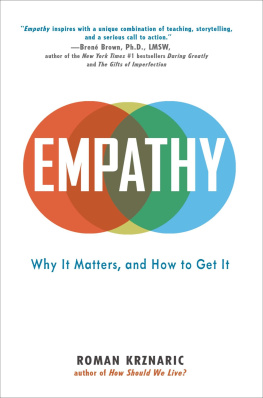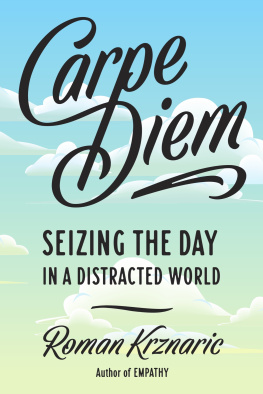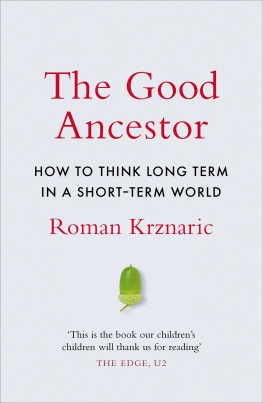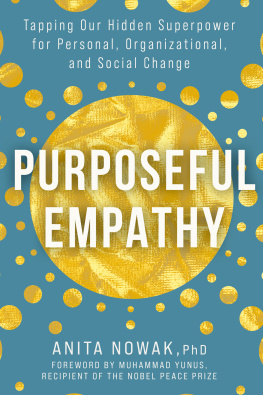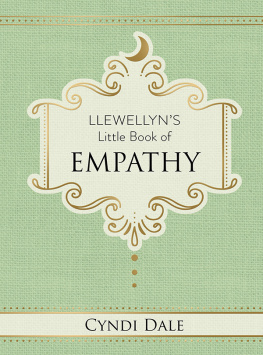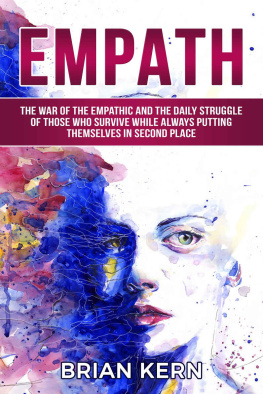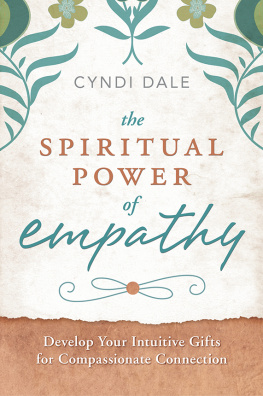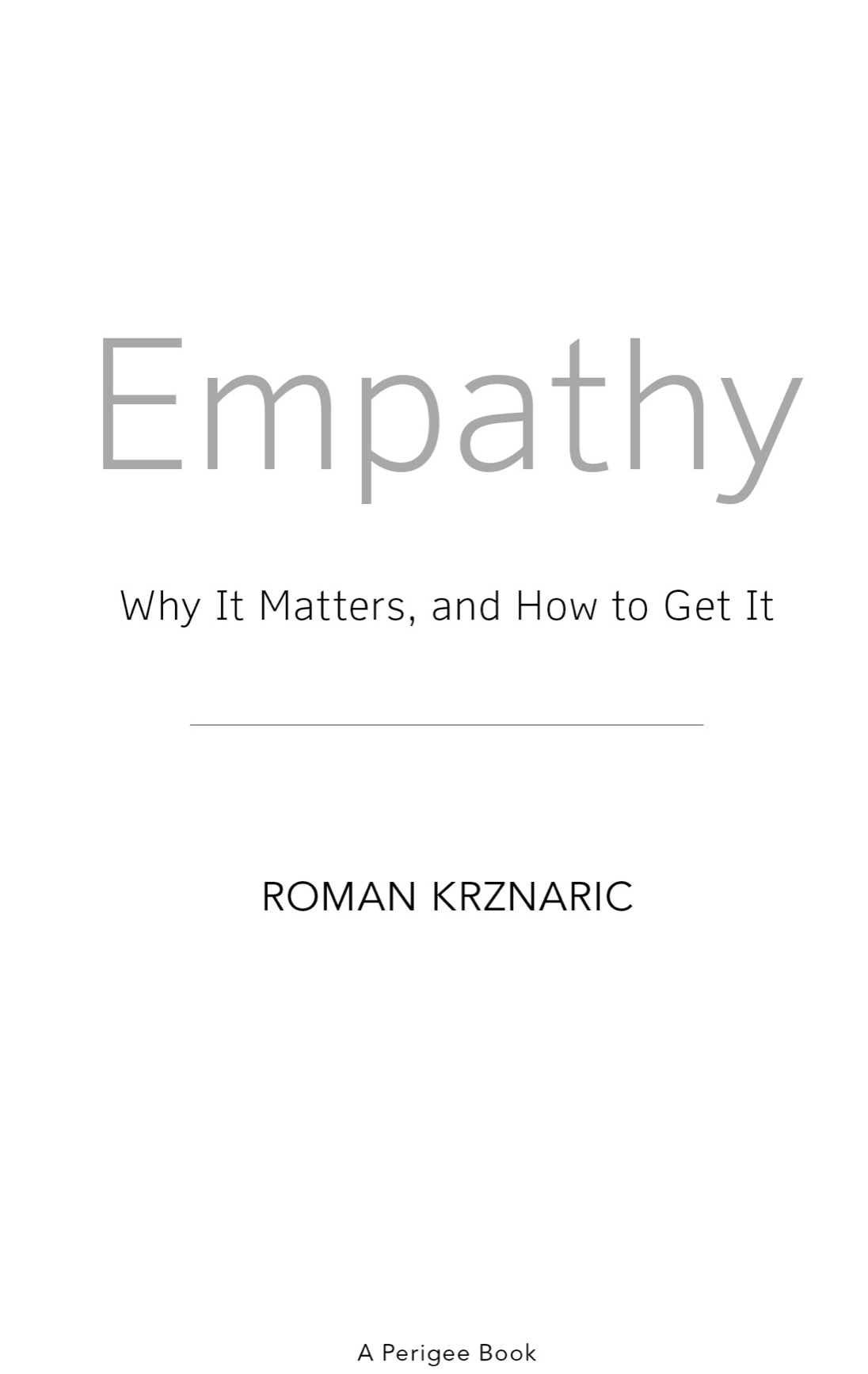A PERIGEE BOOK
Published by the Penguin Group
Penguin Group (USA) LLC
375 Hudson Street, New York, New York 10014

USA Canada UK Ireland Australia New Zealand India South Africa China
penguin.com
A Penguin Random House Company
EMPATHY
Copyright 2014 by Roman Krznaric
Penguin supports copyright. Copyright fuels creativity, encourages diverse voices, promotes free speech, and creates a vibrant culture. Thank you for buying an authorized edition of this book and for complying with copyright laws by not reproducing, scanning, or distributing any part of it in any form without permission. You are supporting writers and allowing Penguin to continue to publish books for every reader.
PERIGEE is a registered trademark of Penguin Group (USA) LLC.
The P design is a trademark belonging to Penguin Group (USA) LLC.
ISBN: 978-0-698-17604-1
First American edition: November 2014
Originally published in Great Britain in 2014 by Rider, an imprint of Ebury Publishing
While the author has made every effort to provide accurate telephone numbers, Internet addresses, and other contact information at the time of publication, neither the publisher nor the author assumes any responsibility for errors, or for changes that occur after publication. Further, the publisher does not have any control over and does not assume any responsibility for author or third-party websites or their content.
Most Perigee books are available at special quantity discounts for bulk purchases for sales promotions, premiums, fund-raising, or educational use. Special books, or book excerpts, can also be created to fit specific needs. For details, write: Special.Markets@us.penguingroup.com.
Version_1
Could a greater miracle take place than for us to look through each others eyes for an instant?
HENRY DAVID THOREAU
Contents
The Radical Power of Empathy
THE REVOLUTION OF HUMAN RELATIONSHIPS
Empathy has a reputation as a fuzzy, feel-good emotion. Many people equate it with everyday kindness and emotional sensitivity and being tender and caring toward others. This book offers a very different view. Empathy is, in fact, an ideal that has the power both to transform our own lives and to bring about fundamental social change. Empathy can create a revolution. Not one of those old-fashioned revolutions based on new laws, institutions, or governments but something much more radical: a revolution of human relationships.
Over the past decade there has been a surge of empathic thinking and action around the globe driven by political activists and advice columnists, business gurus and religious leaders. Protesters in the Occupy movement in Britain and the United States erected Empathy Tents and ran workshops on empathic activism. A radio soap opera in Rwanda, listened to by 90 percent of the population every week, inserts empathic messaging into its storyline about Hutus and Tutsis living in neighboring villages, in an effort to prevent a revival of ethnic violence. Hundreds of thousands of schoolchildren have been taught empathy skills through Roots of Empathy, a Canadian education program that has spread to Britain, New Zealand, and other countries, that brings babies into the classroom and turns them into teachers. A German social entrepreneur has established a worldwide network of museums where blind guides have taken more than seven million visitors around exhibits that are in total darkness, to give them the experience of being visually impaired. All these initiatives are part of a historic wave of empathy that is challenging our highly individualistic, self-obsessed cultures, in which most of us have become far too absorbed in our own lives to give much thought to anyone else.
But what exactly is empathy? And what does it look like in practice?
First, lets get the meaning clear: empathy is the art of stepping imaginatively into the shoes of another person, understanding their feelings and perspectives, and using that understanding to guide your actions. So empathy is distinct from expressions of sympathysuch as pity or feeling sorry for somebodybecause these do not involve trying to understand the other persons emotions or point of view. Nor is empathy the same as the Golden Rule, Do unto others as you would have them do unto you, since this assumes your own interests coincide with theirs. George Bernard Shaw remarked on this in characteristic style when he quipped, Do not do unto others as you would have them do unto youthey might have different tastes. Empathy is about discovering those different tastes.
If you want to grasp just what it means to make the imaginative leap of empathy, then let me introduce you to Patricia Moore, a pioneering figure for todays empathic activists. In 1979, Moore was working as a product designer at the top New York firm Raymond Loewy, which was responsible for creating the curvy Coca-Cola bottle and the iconic Shell logo. Age twenty-six and fresh out of college, she was the only woman designer among 350 men at their Midtown Manhattan office. During a planning meeting to brainstorm a new refrigerator model, she asked a simple question: Couldnt we design the door so that someone with arthritis would find it easy to open? One of her senior colleagues turned to her and replied with disdain, Pattie, we dont design for those people. She was incensed. What did he mean, those people? Riled by his response, she decided to conduct what turned out to be one of the most radical empathy experiments of the twentieth century. She would discover what it was like to be an eighty-five-year-old woman.
I didnt just want to be an actress pretending to be an elderly person, she told me, I wanted a true immersion character, an empathic character, where I could really walk in someone elses shoes. So with the help of a professional makeup artist, she transformed herself. She put layers of latex on her face so she looked old and wrinkly, wore clouded glasses that blurred her vision, plugged her ears so she couldnt hear well, clipped on a brace and wrapped bandages around her torso so she was hunched over, taped splints to her arms and legs so she was unable to bend her limbs, and finished off her disguise with uneven shoes so she was forced to hobble with a stick.
Now she was ready.
Between 1979 and 1982 Moore visited more than a hundred North American cities in her persona, attempting to negotiate the world around her and find out the everyday obstacles that elderly people faced and how they were treated. She tried going up and down steep subway stairs, riding on crowded busses, pushing through heavy department store doors, crossing busy streets before the lights changed, using can openers and, of course, opening refrigerators.
The result of her immersion? Moore took international product design in a completely new direction. Based on her experiences and insights, she was able to design a series of innovative products that were suitable for use by elderly people, including those with arthritic hands. Among her inventions was a line of potato peelers and other kitchen utensils with thick rubber handles, which can now be found in almost every home. She is credited as the creator of inclusive or universal design, where products are designed for people of all abilities, whether aged five or eighty-five. Moore went on to become an expert in the field of gerontology and an influential campaigner for the rights of senior citizens: she was instrumental in getting the Americans with Disabilities Act onto the statute books. Throughout her career, she has been driven more by the desire to improve peoples lives than by the lures of financial success. Now in her sixties, she is currently designing rehabilitation centers where U.S. soldiers who have returned from Afghanistan and Iraq with missing limbs or brain injuries can go to relearn how to live independently, practicing everything from buying groceries to using a cash machine.

